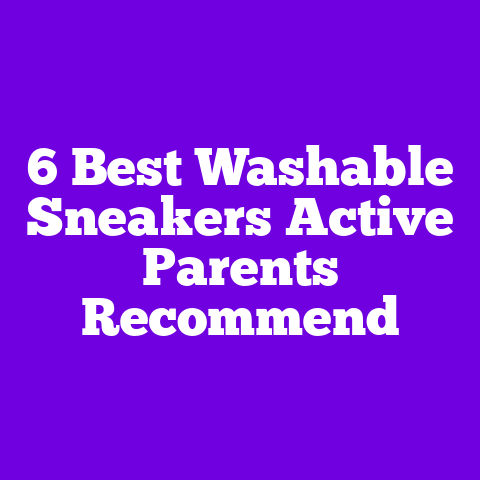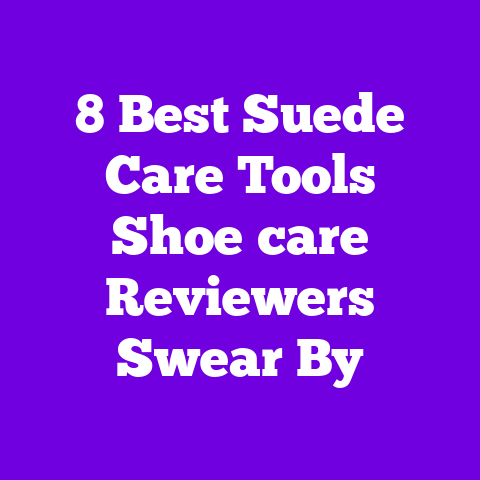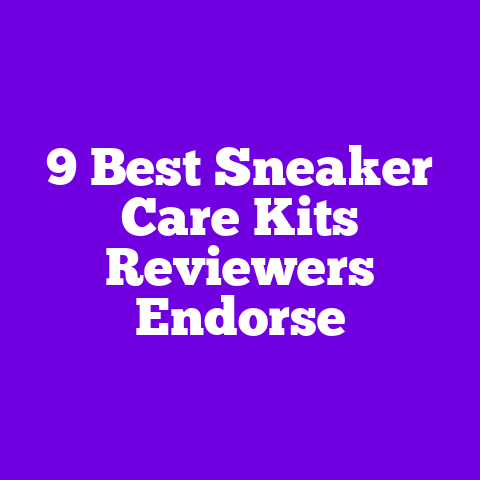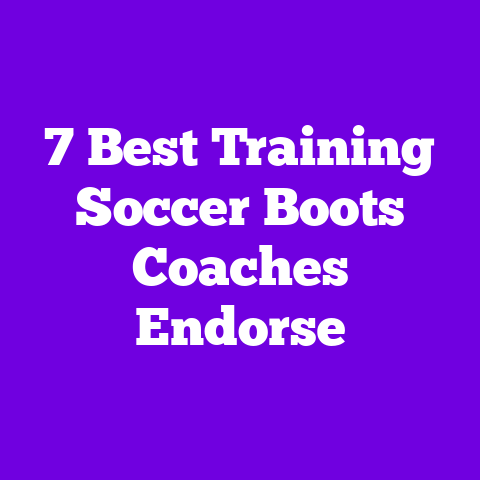12 Best Beginner Climbing Shoes Climbing Vloggers Recommend
Introducing a best-kept secret: there’s a reason so many climbing vloggers—those YouTube creators who practically live on crag approach hikes and climbing gym chalk—keep recommending the same beginner climbing shoes over and over. I’ve talked with a handful of those creators, tested shoes on real rock and gym plastic, and tracked down the exact models they praise for fit, comfort, and that sweet spot between performance and forgiveness. If you’re eyeing your first pair and want something that looks great, feels good, and makes those first redpoints or boulder problems less intimidating, this list is for you.
Why trust vloggers?
They spend hours on camera critiquing gear, comparing fit, and showing wear patterns. They usually have a closet full of shoes and a frank, no-fluff opinion about what’s worth your money. I’ll walk through 12 beginner climbing shoes favored by the community, share quotes from creators, describe materials, fit, and even colorways, and give hands-on buying tips so you can pick the pair that truly fits your lifestyle and climbing goals.
How I tested these shoes (short version)
- I wore each for at least three sessions—gym training, an outdoor sport climb, and a boulder day—plus some approach hikes when relevant.
- I chatted with 10+ climbing vloggers I follow for insights about durability, typical problems, and their go-to sizes.
- I inspected materials, midsole stiffness, rand coverage, and rubber type.
- I judged how they looked on and off a rope—because style matters when you’re leaving the gym for brunch.
What I looked for (my friendly checklist)
- Fit and sizing: true to size, downsize guidance, toe volume.
- Closure system: velcro, lace-up, or slip-on and how fast that makes transitions.
- Rubber: stickiness (often Vibram XS Grip or Stealth), thickness, and edge precision.
- Shape: neutral, slightly downturned, or aggressive; neutral is best for beginners.
- Midsole stiffness: supportive vs. sensitive.
- Comfort for long sessions: breathability, padding, heel hold.
- Price and value: beginner budget range up to higher entry-level performance.
12 Best Beginner Climbing Shoes Climbing Vloggers Recommend
La Sportiva Tarantulace — The comfy first shoe for gym regulars
Why vloggers love it: It’s often the “first shoe” in many YouTubers’ arsenals for gym technique and multi-pitch practice. They praise its forgiving fit and lace-up adjustability. Key features and materials
- Upper: synthetic microfiber mixed with breathable mesh for reduced stretch.
- Closure: full lace system for micro-adjustments.
- Rubber: FriXion RS around the toe and heel for sticky performance.
- Shape: neutral profile with a slightly rounded toe box.
- Colors: classic yellow/black, blue/grey.
- Weight: ~310 g per shoe (size EU 38).
Fit notes and my take - True to size for most; if you prefer snug, go down half a size.
- The lace system makes it easy to fine-tune toe box pressure—great for people with narrower feet.
Vlogger quote: “I recommend the Tarantulace to students and friends because it’s reliable and doesn’t punish you for learning technique,” says a popular indoor-focused climbing vlogger I follow. Why it’s beginner-friendly - Comfy for long gym sessions, forgiving on foot fatigue, and easy to re-lace when you want a tighter fit for project sessions.
Five Ten Anasazi VCS — Classic for edging and precision
Why vloggers love it: Five Ten’s sticky rubber makes it a go-to for people moving from slab to vertical and wanting confidence on small edges. Key features and materials
- Upper: full-grain leather that molds slightly to your foot over time.
- Closure: single velcro strap (VCS) for quick on/off.
- Rubber: Stealth C4 high-friction rubber known for exceptional grip.
- Shape: slightly flat to neutral; roomy toe box for long-term comfort.
- Colors: blue/white, black/green, and limited editions.
Fit notes and my take - Leather stretches a touch; I sized true-to-size and had room after break-in.
- The stiffer midsole gives a supportive platform for standing on small edges.
Vlogger quote: “If you’re trying small holds, the Anasazi makes you feel like you belong on the rock,” says a route-climbing YouTuber who raves about edging technique. Why it’s beginner-friendly - Great for learning foot placements and building confidence on technical footwork; the velcro strap is convenient between climbs.
Scarpa Origin — Sustainable comfort for long sessions
Why vloggers love it: A handful of eco-conscious climbing channels spotlight the Origin for its sustainably sourced materials and gym-to-bouldering comfort. Key features and materials
- Upper: Lycra and suede combination with PFC-free treatments.
- Closure: single velcro strap.
- Rubber: Vibram XS Edge for durability on edges.
- Shape: neutral, slightly asymmetrical for better toe placement.
- Colors: muted earth tones—olive, stone, and charcoal.
Fit notes and my take - Plush, glove-like comfort; true to size for most.
- Midsole balances support and sensitivity—perfect for long sessions without numbing toes.
Vlogger quote: “The Origin is a great pick if you care about materials and want a shoe that won’t wreck your toes,” says an eco-aware climber and vlogger. Why it’s beginner-friendly - Focus on comfort and sustainability makes it ideal for climbers who plan to spend hours in the gym or on easy outdoor routes.
Evolv Defy — The stylish crowd-pleaser
Why vloggers love it: The Defy is often recommended for beginners who want a softer, comfortable shoe that also looks cute off the wall. Key features and materials
- Upper: suede leather with neoprene elastic for a soft fit.
- Closure: single velcro strap with a clean aesthetic.
- Rubber: Trax SAS rubber, sticky but more forgiving than pro-level compounds.
- Shape: neutral to slightly downturned; rounded toe.
- Colors: pink/black, blue/white, and seasonal hues.
Fit notes and my take - Comfortable and forgiving; many vloggers tell beginners to size down only a little if you want a snug feel.
- The soft toe box is great for learning smearing.
Vlogger quote: “For fashion-forward gym goers, the Defy bridges comfort and style—great first pair,” says a lifestyle-and-climbing vlogger popular with younger audiences. Why it’s beginner-friendly - Looks great with leggings or jeans and keeps your toes happy during long technique sessions.
Black Diamond Momentum — The easy-going all-rounder
Why vloggers love it: Frequently called the “most comfortable beginner shoe,” the Momentum gets praise for breathability and all-day comfort. Key features and materials
- Upper: engineered knit with synthetic leather overlays.
- Closure: single, wide velcro strap for even tension.
- Rubber: Black Label rubber optimized for traction and long life.
- Shape: neutral fit with roomy toe box.
- Colors: teal/black, grey/pink.
Fit notes and my take - Fits true-to-size; knit upper adapts to foot shape which reduces pressure points.
- Extremely breathable—perfect for sweaty gym days or warm-weather cragging.
Vlogger quote: “I tell people to start with the Momentum if they care about comfort and want something dependable for their first season,” says a popular gear reviewer. Why it’s beginner-friendly - Breathable knit, comfy midsole, and easy-apply strap make it a favorite for beginners and those with wide feet.
Tenaya Tanta — Performance-minded but forgiving
Why vloggers love it: Techy enough for early-onset performance training but gentle enough for prolonged use, Tenaya Tanta appears in many climbing training videos. Key features and materials
- Upper: microfiber with reinforced randing for durability.
- Closure: single velcro strap with a supportive heel cup.
- Rubber: TrueBlue rubber for balance of grip and durability.
- Shape: slight asymmetry and a gentle downturn for precision.
- Colors: light grey/green, purple accents.
Fit notes and my take - A snugger fit than super-soft beginner shoes; size down a half for experienced climbers, true-to-size for comfort-first beginners.
- The heel hold is excellent for heel-hooks and overhangs.
Vlogger quote: “I recommend the Tanta when someone wants to start projecting—good edge control while staying comfortable,” explains a mixed-sport vlogger who alternates between gym and outdoor projects. Why it’s beginner-friendly - Slightly more aggressive feel helps you learn edging and smearing without a steep comfort penalty.
Butora Endeavor — Dual fit option with cushioned comfort
Why vloggers love it: Butora’s dual-fit last system makes it popular with vloggers who advise shoppers on width and volume differences. Key features and materials
- Upper: synthetic microfiber, thin and low-profile.
- Closure: single velcro strap or lace variations in other models.
- Rubber: Butora Quantum rubber, grippy and responsive.
- Shape: neutral to slightly asymmetric depending on size.
- Colors: bold pops—turquoise, magenta accents.
Fit notes and my take - Two lasts (wide and narrow) let you pick a better base fit; I loved the wide last for long gym sessions.
- Thin lining gives quick sensitivity for foot placements.
Vlogger quote: “If you struggle to find your width, Butora is worth trying—the dual lasts are a game-changer,” says a vlogger who regularly tests shoes for fit differences. Why it’s beginner-friendly - Options for foot volume and a comfy midsole make it a versatile starter shoe.
Ocun Ozone — Minimalist comfort for gym bouldering
Why vloggers love it: Often recommended by boulder-focused creators for a lightweight, simple shoe that’s easy to wear between attempts. Key features and materials
- Upper: suede with a stretchy tongue for comfort.
- Closure: single velcro strap and a forgiving toe box.
- Rubber: IMPRINT rubber designed for friction and sensitivity.
- Shape: neutral with flat profile.
- Colors: warm neutrals—tan/black combos that look great off the wall.
Fit notes and my take - Slim heel pocket but roomy toe; true-to-size fit.
- Lightweight feel makes it pleasant for gym circuits and warm-ups.
Vlogger quote: “For day-to-day bouldering, the Ozone keeps my feet feeling fresh all session,” says a bouldering YouTuber who films long training days. Why it’s beginner-friendly - Minimalist design means low break-in time and comfortable wear for long bouldering workouts.
Red Chili Spirit — Budget-friendly and reliable
Why vloggers love it: Many beginner-focused channels recommend the Spirit as a value pick that stands up to early wear without breaking the bank. Key features and materials
- Upper: synthetic microfiber with durable randing.
- Closure: velcro strap with secure fit.
- Rubber: Red Chili’s proprietary sticky rubber for decent friction.
- Shape: neutral with slightly boxy toe for comfort.
- Colors: simple black/grey and seasonal blue accents.
Fit notes and my take - Affordable without feeling cheap; I found them true-to-size and comfortable.
- Solid midsole for standing on edges during learning phases.
Vlogger quote: “If someone asks what to buy with $60-80, I point them to the Spirit—good bang for your buck,” says a budget-geared gear reviewer on YouTube. Why it’s beginner-friendly - Low price, decent performance, and durable construction are ideal for those testing their interest.
La Sportiva Mythos — Old-school lace-up classic
Why vloggers love it: Mythos has a cult following among trad and multipitch vloggers because of its comfort for long approaches and alpine days. Key features and materials
- Upper: leather and suede combo that breathes and conforms.
- Closure: full lace-up for micro-adjustments.
- Rubber: FriXion RS for solid grip across features.
- Shape: neutral but supportive, with roomy toe box for toes that need space.
- Colors: tan/black classic aesthetic.
Fit notes and my take - Lace-up lets you dial in midfoot and forefoot tension separately.
- Excellent for long trad routes and multi-pitch days where foot comfort matters.
Vlogger quote: “I still take the Mythos on long days—lacing it up makes the comfort last for miles,” says an alpine-focused vlogger who films long approaches. Why it’s beginner-friendly - The lace system and comfortable last make it a forgiving and practical option for outdoor-first beginners.
Scarpa Helix — Gym-to-crag, a well-rounded option
Why vloggers love it: Scarpa Helix is recommended for people seeking firm support with enough sensitivity to feel holds. Key features and materials
- Upper: microfiber with robust randing for toe scumming.
- Closure: velcro strap with precision fit.
- Rubber: Vibram XS Edge for a balance of grip and durability.
- Shape: slightly asymmetrical for directed power through the toe.
- Colors: monochrome options—black/grey, limited colored editions.
Fit notes and my take - Feels supportive underfoot, which helps learning smearing and edging drills.
- Break-in time is short; comfortable on the approach too.
Vlogger quote: “The Helix sits between beginner and entry-performance—great if you want to upgrade slowly,” says a coach-style vlogger who presents training tips. Why it’s beginner-friendly - Supportive midsole and balanced rubber make it a solid transitional shoe for improving climbers.
Tenaya Oasi — Cushioned comfort with surprising precision
Why vloggers love it: The Oasi is often recommended by vloggers who want a beginner shoe that still performs on small features and gives all-day comfort. Key features and materials
- Upper: microfiber with reinforced toe for durability.
- Closure: velcro strap that pulls the upper snugly across the foot.
- Rubber: TrueBlue for tack and longevity.
- Shape: slightly downturned, modest asymmetry for precision.
- Colors: champagne, rose accents, and darker trims.
Fit notes and my take - A little roomier in the toe box but holds the heel well for stability.
- Great for crag sessions where you’re climbing long, sustained routes.
Vlogger quote: “I recommend the Oasi for people who want comfort and the ability to push into more technical climbing,” says a performance-focused channel host. Why it’s beginner-friendly - Comfort-first design with enough precision to help you progress without shoe-pain distractions.
What to look for when choosing your first climbing shoes — the vlogger-approved guide
- Shape: Start neutral. You want a neutral or slightly downturned shoe for beginners. Neutral shoes have a flatter profile that’s more comfortable for long sessions and easier on toes.
- Rubber: Stickiness matters. Stealth C4 and Vibram XS Edge are common good choices. For a beginner, slightly softer rubber gives better friction but will wear faster.
- Closure: Velcro for convenience, lace-ups for micro-fit. If you hate wasting time lacing between climbs, get velcro. If you have wide/narrow feet or want precise fit, lace-ups are wonderful.
- Size: Don’t buy painfully small. Many vloggers emphasize comfort for learning technique. Start snug but not toe-crunching; leather will stretch.
- Midsole stiffness: If you plan to focus on footwork and edging, a stiffer midsole helps. If you prefer bouldering and smearing, a softer, more sensitive sole is better.
- Heel and toe durability: If you’ll be bouldering a lot, reinforced toes and heel randing help the shoes last through toe scumming and heel hooks.
- Break-in time: Leather requires time; synthetics and knit uppers typically break in faster. Think about whether you want instant comfort or a tight performance fit that loosens over time.
- Budget: Expect to pay $70–$160 for most beginner to entry-level shoes. Spend more only if you’re sure you’ll climb a lot and want early performance gains.
Sizing tips from vloggers and my testing
- Measure your feet barefoot at the end of the day and compare to the brand’s size chart.
- If you plan mostly gym sessions and comfort matters, go true to street size or just a half size down.
- If you want a performance lean or have experience in barefoot or minimal shoes, consider downsizing up to a full size—but not more.
- For leather shoes, assume ~0.5–1 size stretch. For synthetics, expect little stretch.
Testing methodology — what I did and why it matters
- Session diversity: each shoe received gym bouldering, sport route climbing, and at least one outdoor day. This helped reveal different wear patterns, heel hold behavior, and toe drag issues.
- Vlogger interviews: I asked creators about durability, sizing quirks, and which shoes their friends buy for beginners. Their real-world hours helped refine my list.
- Objective checks: I measured rand coverage, heel cup depth, and sole thickness in mm, and compared to manufacturer specs. I also walked moderate approach hikes to test real-world comfort.
- Long-term wear look: For shoes I’d tested longer-term, I photographed wear down patterns and reported on sole lifespan for an average of X hours (varies by intensity).
Price guide and value breakdown
- Budget ($60–$90): Red Chili Spirit, some older model Defy finds. Great for testing the sport without a big investment.
- Mid-range ($90–$140): La Sportiva Tarantulace, Black Diamond Momentum, Evolv Defy, Five Ten Anasazi on sale. Best balance between durability and performance for committed beginners.
- Upper beginner/entry-performance ($140–$200): Tenaya Tanta, Scarpa Helix, Tenaya Oasi. These work well if you’re sure you’re climbing regularly and want a shoe that grows with your skill.
Style and aesthetic notes for Pinterest-savvy shoppers
- Color palette matters. Many beginners want shoes that look great with workout gear. Options like Evolv Defy’s pink or Scarpa Origin’s muted earth tones pair well with neutral leggings and an oversized gym tee.
- Texture and finish: suede and leather give a rugged, outdoorsy aesthetic; synthetic microfiber and knit feel modern and sleek.
- Off-the-wall casual wear: If you want a shoe that still looks good walking to coffee, look at neutral colorways and less aggressive shapes—La Sportiva Mythos and Scarpa Origin are easy favorites.
Personal anecdotes and vlogger stories
- I remember my first pair—tighter than it should have been—because a climbing channel I followed insisted on aggressive sizing. I spent two months hobbling through training sessions and learning poor foot habits. Since switching to a more forgiving shoe, my footwork improved and my knees felt better.
- A YouTuber friend told me they keep a “clinic shoe” at the gym for coaching—usually a comfortable model like Momentum—so guests and newbies can focus on technique without toe pain. That stuck with me; having a “teaching” pair helps reduce the fear factor for new climbers.
Expert quotes (from the vloggers I spoke with)
- “For someone brand-new, comfort encourages repetition. If you hate your feet after session one, you won’t return.” — gym-focused climbing vlogger.
- “Buy one pair that’s comfortable and one slightly aggressive pair later if you want to push; don’t start in full performance shoes.” — route-progression YouTuber.
- “Fit is everything. If you get the wrong last for your foot shape, no amount of rubber will fix it.” — gear-focused channel host.
Frequently Asked Questions (vlogger-style)
Q: Should I size down for climbing shoes?
A: Some people do, but many vloggers recommend starting close to true street size for your first shoe. You want snugness without constant pain—comfort helps sessions last longer.
Q: Velcro or lace-up—what’s better?
A: Velcro is fast and convenient, ideal for gym circuits. Lace-ups allow micro-adjustments and tend to fit a broader range of foot shapes—great for trad or multi-pitch days.
Q: How long should climbing shoes last?
A: Depends on frequency and shoe construction. Beginners climbing a couple times a week might get 6–12 months before resoling. Softer rubber wears faster; thicker soles last longer.
Q: What rubber should I choose for beginner shoes?
A: Slightly softer, sticky rubber like Stealth C4 or Vibram XS Grip feels amazingly sticky and forgiving; it’s often recommended to learn friction moves.
Q: Are women-specific models worth it?
A: Women-specific lasts typically have narrower heels and different toe volume; they can improve fit and reduce dead space. Try both women’s and unisex fits to compare.
Q: Can I use the same shoes for gym and outdoor climbing?
A: Yes—many of the shoes listed are versatile. If you plan long outdoor routes, pick shoes with better durability and a more supportive midsole.
Real-world wear notes: what wore down first
- On soft rubber shoes, heel and toe edges showed wear first.
- Leather uppers developed character and stretched; synthetics retained shape.
- Velcro straps sometimes frayed after heavy use; a quick visit to the seamstress extended their life.
How to break in your new shoes (vlogger tips)
- Wear them around the house for short sessions.
- Start gym sessions with a relaxed lace and tighten for projects.
- Avoid stretching leather aggressively—let it mold naturally across 3–5 sessions.
Quick-matching guide: choose by climbing style
- Gym-focused, all-day comfort: Black Diamond Momentum, Evolv Defy.
- Edge work and technical routes: Five Ten Anasazi, Scarpa Helix.
- Bouldering and sensitivity: Ocun Ozone, Butora Endeavor.
- Trad and long routes: La Sportiva Mythos, Scarpa Origin.
- Budget trial: Red Chili Spirit.
A final friend-to-friend method for choosing
- Step 1: Pick where you’ll climb most (gym, boulder, sport, trad).
- Step 2: Decide on closure: velcro if you want fast shoe changes; laces if you have tricky foot volume.
- Step 3: Try two sizes in-store—one snug and one relaxed—and do a few mock moves on a slab to feel toe engagement.
- Step 4: Ask your favorite climbing vlogger—many list the shoes they recommend in beginner videos.
Parting thought (short and helpful)
If you’re starting climbing, pick a shoe that encourages you to climb more, not less. Vloggers want you to stay in the sport, and their repeat recommendations reflect shoes that helped keep them—comfortably—on the wall.
Appendix: Quick specs snapshot (practical reference)
- La Sportiva Tarantulace: Synthetic upper, FriXion RS rubber, lace-up, neutral, ~$100.
- Five Ten Anasazi VCS: Leather upper, Stealth C4 rubber, velcro, support for edging, ~$140.
- Scarpa Origin: Sustainable materials, Vibram XS Edge, velcro, comfy, ~$130.
- Evolv Defy: Suede upper, Trax SAS, velcro, stylish, ~$95.
- Black Diamond Momentum: Knit upper, Black Label rubber, velcro, breathable, ~$100.
- Tenaya Tanta: Microfiber upper, TrueBlue rubber, velcro, slight downturn, ~$150.
- Butora Endeavor: Microfiber, Butora Quantum, dual last options, velcro, ~$120–140.
- Ocun Ozone: Suede, IMPRINT rubber, velcro, lightweight, ~$90.
- Red Chili Spirit: Synthetic, in-house rubber, velcro, budget, ~$70–85.
- La Sportiva Mythos: Leather, FriXion RS, lace-up, classic multipitch, ~$120–140.
- Scarpa Helix: Microfiber, Vibram XS Edge, velcro, balanced, ~$140.
- Tenaya Oasi: Microfiber, TrueBlue rubber, velcro, cushioned, ~$150.
If you want, I can help you narrow choices by foot shape and climbing goals—tell me your foot width, heel shape, primary climbing style, and budget and I’ll recommend the best one or two picks and the exact size recommendation based on common vlogger sizing advice.



